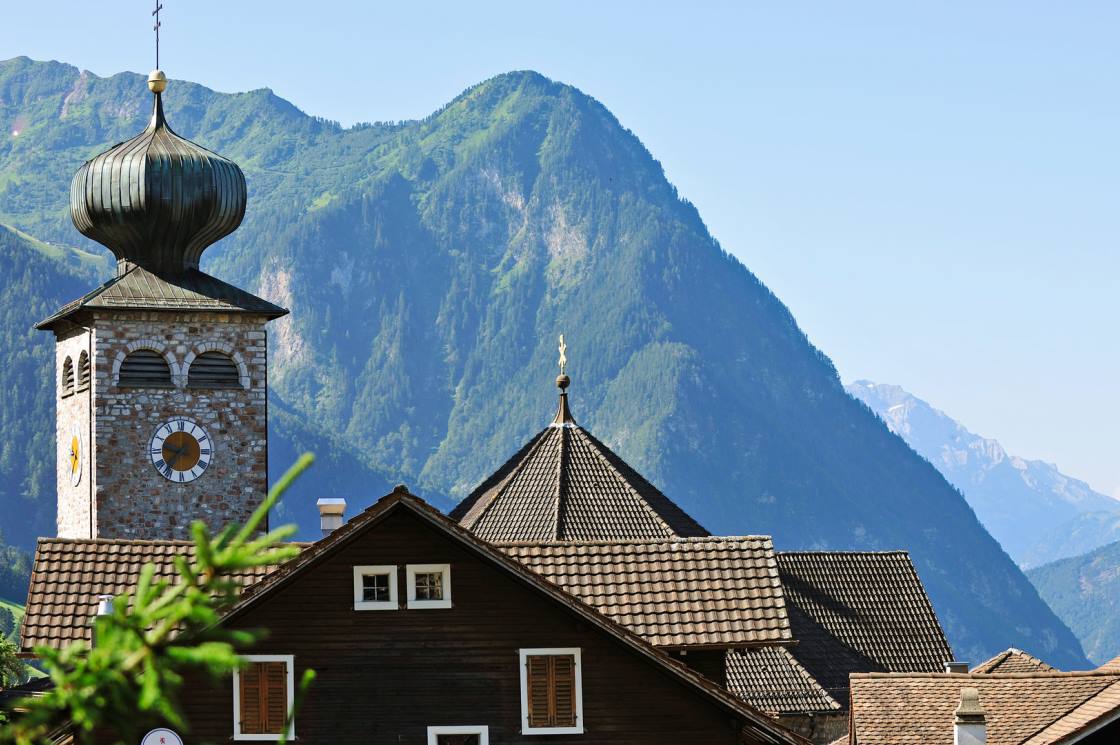stone egerta unplugged
Alps Liechtenstein

Triesenberg, in many respects a very "special spot" | © Liechtenstein Marketing
 Vacation in the Principality of Liechtenstein
Vacation in the Principality of LiechtensteinFor many years, they were considered "stubborn", "peculiar" and "tough" - in an endearing way: the people of Triesenberg, high above the city of Vaduz.
Whether the difference to the rest of the country's population is still so great today, remains to be seen. What is certain is that the people of Triesenberg are very proud of their origins, because unlike those people in the valley, the mountain community is one of the direct descendants of the Walsers - those cattle breeders and mountain farmers from the Valais who left their homeland in the 12th and 13th centuries to scatter in all directions. The first written evidence of Walsers at Triesenberg is found in a document of 1355, an arbitration award of the count's bailiff, in which they were granted a part of the Alpe Malbun. But it is assumed that they settled in Liechtenstein already at the end of the 13th century.
In many areas the Walser spirit can still be felt today. For even if the community has meanwhile developed into a popular place of residence for all inhabitants of the country, Triesenberg has remained a very "special spot" in many respects.
The pithy Walser dialect
"What did he say?", many a visitor asks himself when talking to an original Triesenberger. And rightly so. Those who are not used to the pithy Walser dialect actually have trouble understanding it. The dialect differs clearly from the dialects in the other communities and is characterized, among other things, by its unusual vowel richness as well as by the shift of the "s" to the "sch" or its peculiar diminutive forms. Mice become "Müüsch" or the forest becomes "Waldi". It is a great achievement for the people of Triesenberg that they have managed to maintain their language over such a long period of time and not let it become diluted.
Masescha Chapel as a contemporary witness
The early immigrants from the Valais first settled at the higher altitudes, such as Masescha, before spreading down the valley and forming the hamlet settlement of Triesenberg. As a contemporary witness of the early days of the Walsers, the small chapel on Masescha still stands today. Here the people met to worship the Walser saint Theodul and to draw new strength for future deeds. By the way, the Walser saint Theodul is still worshipped in the chapel on Masescha - just like in the old days.
The hamlet settlement
Whoever walks through Triesenberg today encounters the old tradition practically at every turn. The village has grown historically. This also includes the 400-year-old "Walserhaus", which stands in the center of Triesenberg and in which the living culture of the 19th century can still be experienced by those who are interested.
Walserism to "touch
Pride in its origins leads the community to invest a lot in the memory of its history. Those who are interested in the sagas, legends and stories of the ancient people will get their money's worth on the WalserSagenWeg. Hikers encounter bizarre figures such as the "Wildmannli" or the "Feuerroten Geissbock" and learn what the "Nachtvolk" is all about. An adventure trail of a special kind. And for all those who are looking for further evidence of the "living" Walser spirit in Triesenberg, a visit to one of the annual Walser meetings is recommended. On these folkloric occasions, in which the typical traditional costumes are worn, the Walsers from the scattered settlements flock together to strengthen the sense of community and to honor their history. Dates for the next Walser meeting can be found on the homepage of the International Walser Association!
Snowshoeing, cross-country skiing and exuberant sledding in Liechtenstein
5 unforgettable family winter experiences in the principality
Completely undisturbed - only the hissing of skis in the snow can be heard
Unique experience in the mountain village of Malbun
Magnificent circular hike from Malbun to the Augstenberg mountain
An unforgettable mountain experience